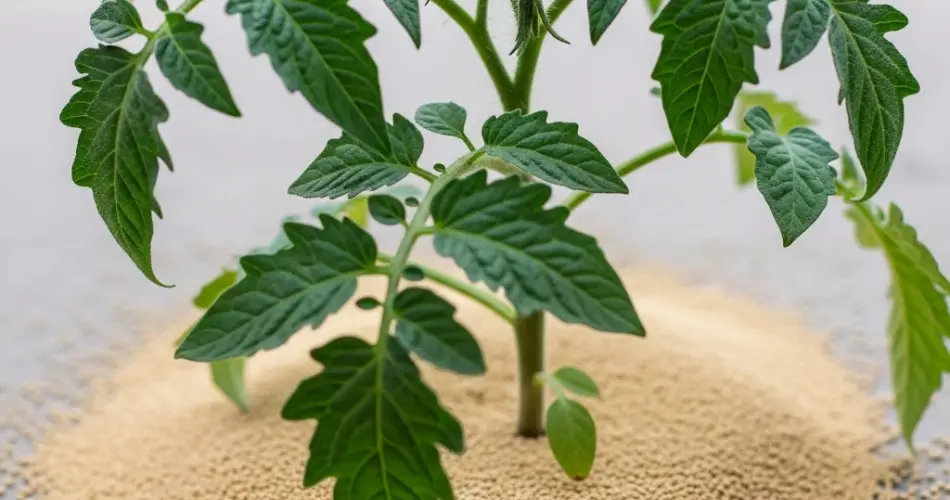Many gardeners spend a lot of time and money searching for the perfect fertilizer to boost plant growth. However, one of the best natural supplements for healthy, vigorous plants may already be sitting in your kitchen cupboard: dry yeast. Simple, affordable, and easy to use, dry yeast provides a remarkable boost to plants — especially vegetables like tomatoes, cucumbers, and peppers — by stimulating root growth and improving soil health.
Let’s take a closer look at how and why dry yeast works so well as a plant supplement, and how you can use it effectively in your garden.
What Makes Dry Yeast So Powerful?
Dry yeast (commonly used for baking) is made up of living microorganisms — typically Saccharomyces cerevisiae — that, when activated, begin a fermentation process. While yeast doesn’t directly add traditional nutrients like nitrogen or potassium, it stimulates beneficial soil microbiology, which in turn makes nutrients more available to plants.
Here’s what dry yeast contributes:
-
B Vitamins: Help boost plant metabolism and improve stress resistance.
-
Natural growth hormones: Stimulate root and shoot development.
-
Amino acids and enzymes: Support cell formation and nutrient absorption.
-
Beneficial microorganisms: Improve soil health by increasing microbial activity.
Using yeast in the garden promotes lush foliage, stronger stems, and better root systems — all of which lead to more productive and healthier plants.
Which Plants Benefit Most?
While nearly all plants can benefit from yeast supplementation, it’s particularly effective for:
-
Tomatoes – for early flowering, stronger stems, and higher yields
-
Cucumbers – to encourage vigorous vines and fruiting
-
Peppers – for lush growth and more consistent blooming
-
Leafy greens – such as spinach and lettuce, for increased leaf production
-
Ornamental flowers – like petunias, roses, and geraniums
Because yeast stimulates biological activity rather than delivering direct nutrients, it’s best used alongside compost or organic fertilizer rather than as a complete replacement.
How to Prepare a Yeast Fertilizer Solution
Making a yeast-based plant supplement at home is quick and easy. You’ll only need a few basic ingredients.
Ingredients:
-
1 packet (about 7 grams) of dry yeast
-
1 tablespoon of sugar
-
1 liter of warm water (not hot)
Instructions:
-
Dissolve the yeast and sugar in the warm water.
-
Stir well and allow the mixture to sit for 2–3 hours in a warm place. This activates the yeast and begins fermentation.
-
Once bubbling appears, dilute the solution with 4–5 liters of water.
-
The fertilizer is now ready to use.
How to Use Yeast Fertilizer in the Garden
Apply the yeast solution around the base of your plants. Avoid pouring it directly on the leaves.
Application Guidelines:
-
Seedlings: Use once they have at least two sets of true leaves. Apply gently to encourage root growth.
-
Vegetables and flowers: Water at the base of the plant every two to three weeks during the growing season.
-
Houseplants: Apply monthly, using a more diluted version (1:10 with water).
This feeding routine promotes healthy growth without overwhelming the plants or soil.
Important Tips for Best Results
-
Do not overuse. Too much yeast can upset the balance of your soil’s natural microbes and temporarily reduce available nitrogen.
-
Combine with compost or mulch. Yeast enhances microbial life, which works best when organic matter is present.
-
Store leftovers in the fridge, but try to use the solution fresh for the most effective results.
-
Avoid during extreme heat, which can overstimulate fermentation and harm roots.
Why It Works: The Science Behind It
Dry yeast doesn’t feed plants directly like commercial fertilizers. Instead, it activates soil life — especially beneficial bacteria and fungi — which improves nutrient uptake and stimulates robust root development.
For example:
-
In tomatoes, yeast can encourage early fruit set and reduce issues like blossom-end rot by strengthening plant structure.
-
In cucumbers, it helps establish sprawling, vigorous vines that are more resistant to powdery mildew and stress.
-
For houseplants, yeast can revive tired soil and bring a noticeable “greening” effect within days.
Final Thoughts
Dry yeast may seem like an unlikely garden hero, but it’s a simple and effective tool for promoting plant health naturally. With just a tablespoon of yeast, a bit of sugar, and some water, you can create a powerful bio-stimulant that supports plant growth from the roots up.
Affordable, natural, and already in your kitchen — dry yeast is one of the best plant supplements you’re probably not using yet. Try it this season and see the results in your tomatoes, cucumbers, and more. Healthier, stronger, and more productive plants are just a mix away.



